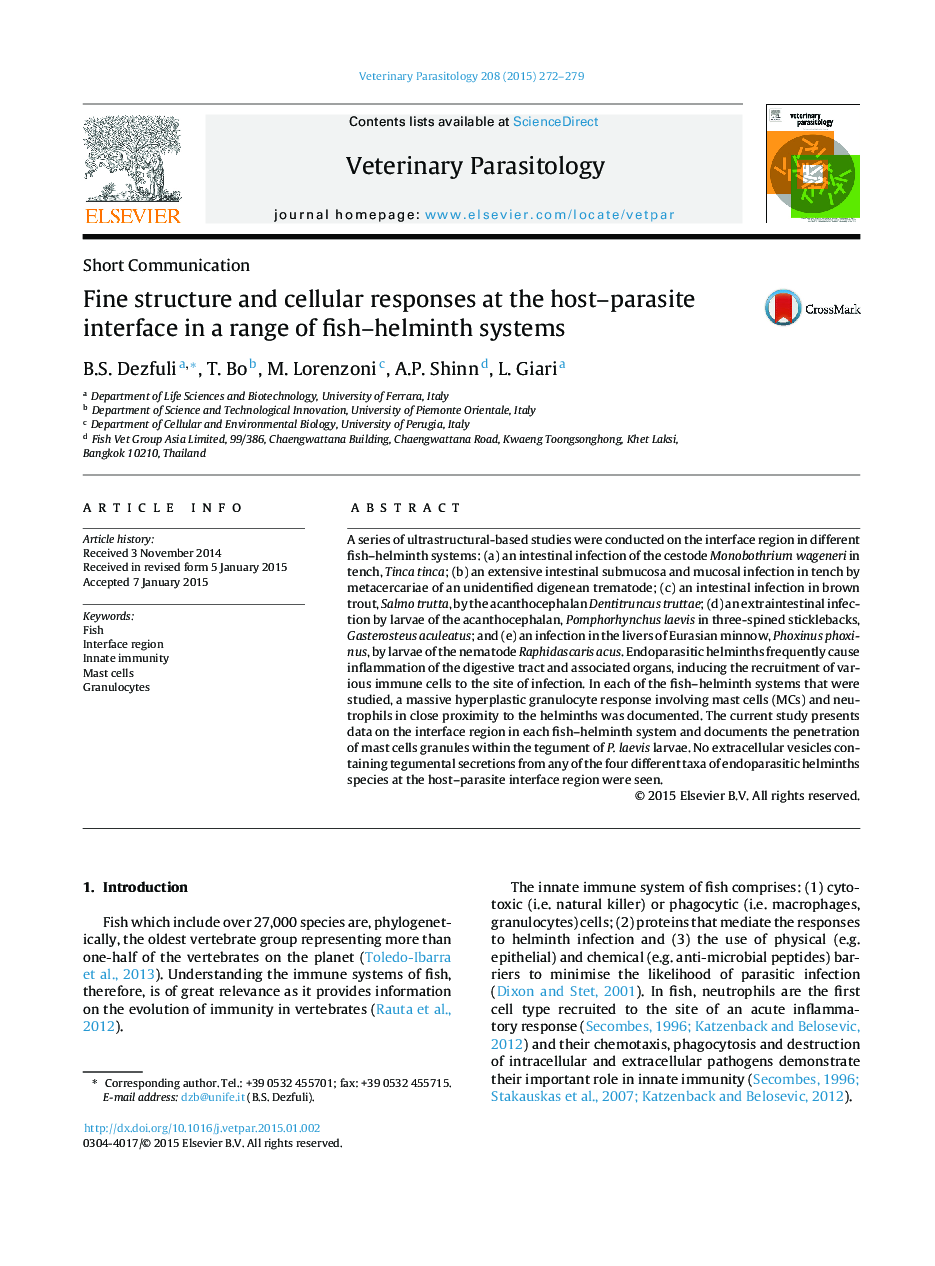| Article ID | Journal | Published Year | Pages | File Type |
|---|---|---|---|---|
| 5802548 | Veterinary Parasitology | 2015 | 8 Pages |
â¢Endohelminths cause inflammation of the fish digestive tract and associated organs.â¢Mast cells and neutrophils massive hyperplastic response to the helminths.â¢No vesicular secretions of the helminths at the host-parasite interface region.â¢Penetration of mast cells granules inside tegument of an acanthocephalan.
A series of ultrastructural-based studies were conducted on the interface region in different fish-helminth systems: (a) an intestinal infection of the cestode Monobothrium wageneri in tench, Tinca tinca; (b) an extensive intestinal submucosa and mucosal infection in tench by metacercariae of an unidentified digenean trematode; (c) an intestinal infection in brown trout, Salmo trutta, by the acanthocephalan Dentitruncus truttae; (d) an extraintestinal infection by larvae of the acanthocephalan, Pomphorhynchus laevis in three-spined sticklebacks, Gasterosteus aculeatus; and (e) an infection in the livers of Eurasian minnow, Phoxinus phoxinus, by larvae of the nematode Raphidascaris acus. Endoparasitic helminths frequently cause inflammation of the digestive tract and associated organs, inducing the recruitment of various immune cells to the site of infection. In each of the fish-helminth systems that were studied, a massive hyperplastic granulocyte response involving mast cells (MCs) and neutrophils in close proximity to the helminths was documented. The current study presents data on the interface region in each fish-helminth system and documents the penetration of mast cells granules within the tegument of P. laevis larvae. No extracellular vesicles containing tegumental secretions from any of the four different taxa of endoparasitic helminths species at the host-parasite interface region were seen.
